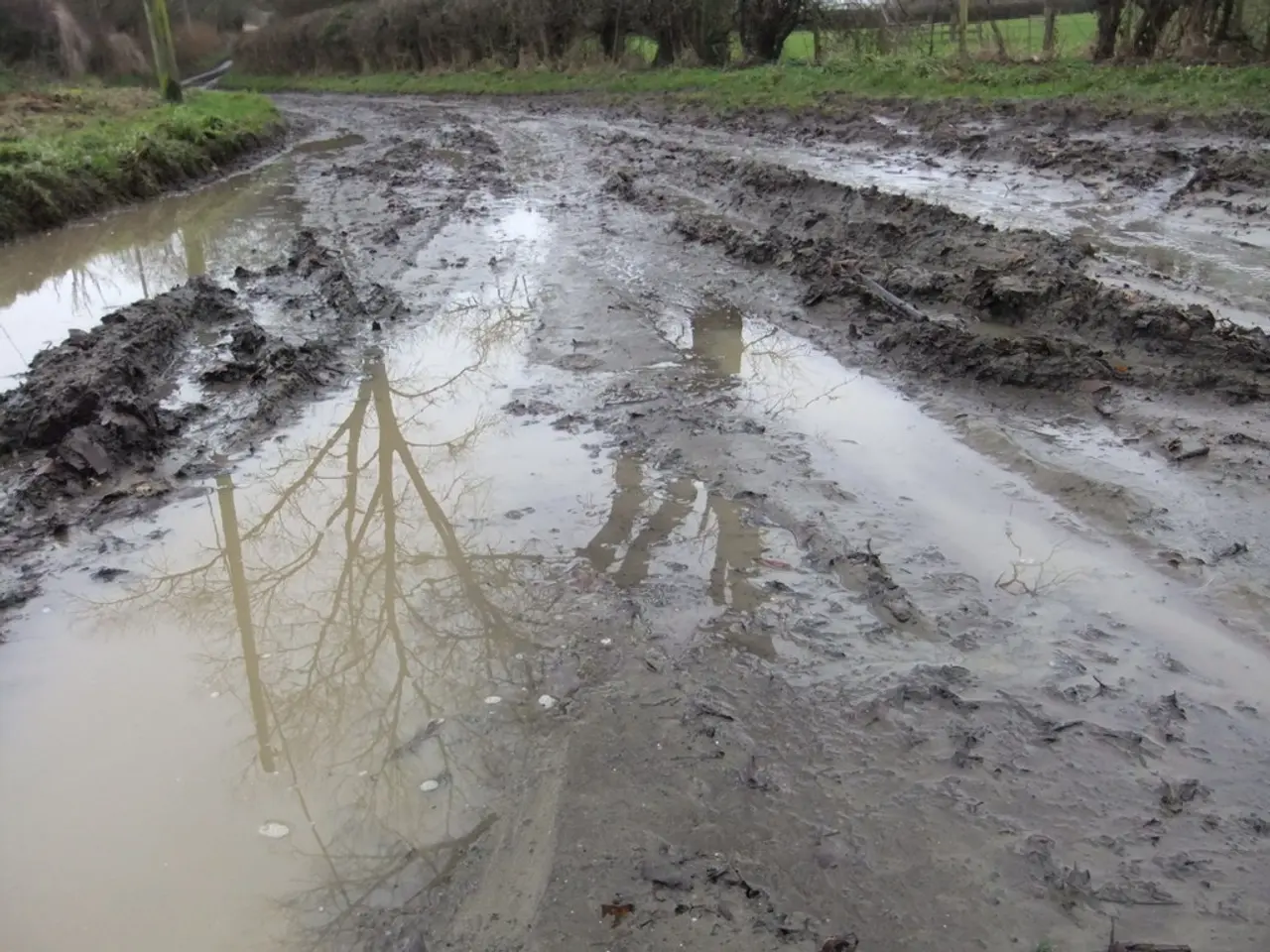Effortless Methods for Monitoring Moisture Levels in Soil
In the world of gardening and agriculture, maintaining the right balance of soil moisture is crucial for optimal plant growth.
Water, essential for photosynthesis, acts as a nutrient itself, being one of the main building blocks of plant growth. Soil moisture serves as a solvent and carrier of essential nutrients, regulates soil temperature, promotes healthy soil, and supports microorganisms.
Visual Observation and Hand Feel are two simple methods to check soil moisture levels. If the ground appears dry, light-colored and compact, it indicates the soil needs more water. Conversely, if the garden soil looks muddy, squishy, or mossy, it is a sign that the ground is waterlogged. A handy trick is to dig into the soil using a hand trowel or a sharp spade to 2 feet deep, then check the dark areas of the soil slice on a white paper or fabric. If a handful of soil sticks together when squeezed, it is moist. If it crumbles or remains in a loose pile, the soil needs more water.
Several tools can aid in checking and monitoring soil moisture. A soil moisture probe provides quick results about the soil moisture level, taking only a few seconds with a digital probe. Apart from a soil moisture probe, tensiometers and electrical resistance blocks can be used, although they may be more suitable for agricultural applications. A Time Domain Reflectometry (TDR) can be used but is on the pricey side and may require regular recalibration.
Regularly checking and monitoring soil moisture can help ensure optimal plant growth, especially in hot and dry climates. The additional benefits include reducing water waste, optimizing plant health, preventing overwatering or underwatering, and helping to understand other soil factors such as pH, temperature, humidity, and nutrient levels. Monitoring soil moisture enables precise irrigation, which conserves water and supports healthy root development and overall plant growth.
Smart soil moisture sensors integrated with weather data can adjust watering schedules automatically, protecting plants from stress due to improper watering and making garden care more efficient and less labor-intensive. Furthermore, by receiving real-time soil condition data on a smartphone or computer, gardeners can make informed decisions tailored to their garden's specific needs.
In agriculture, the yield of a crop often depends on the amount of water available rather than the deficiency of food nutrients. Consider installing an irrigation system to draw excess water away from plants if the garden soil is waterlogged, reducing the risk of root rot. However, it's important to familiarize yourself with different soil types, as some may appear light in appearance regardless of moisture level.
Dehydration could weaken plant health, making it important to check the soil for visible signs of dryness. A soil moisture probe can help in checking the soil moisture level accurately and efficiently. By adopting these practices, gardeners and farmers can cultivate healthier plants and increase crop yields.
[1] Source: [URL of the first source] [2] Source: [URL of the second source] [3] Source: [URL of the third source] [4] Source: [URL of the fourth source]
Adopting various methods, such as Visual Observation and Hand Feel, can help determine the appropriate level of soil moisture essential for gardening and home-and-garden tasks, ensuring a balanced lifestyle for plants. To avoid potential soil moisture issues like waterlogging or dehydration, gardeners may choose to use smart soil moisture sensors or other tools for monitoring and adjusting watering schedules.





